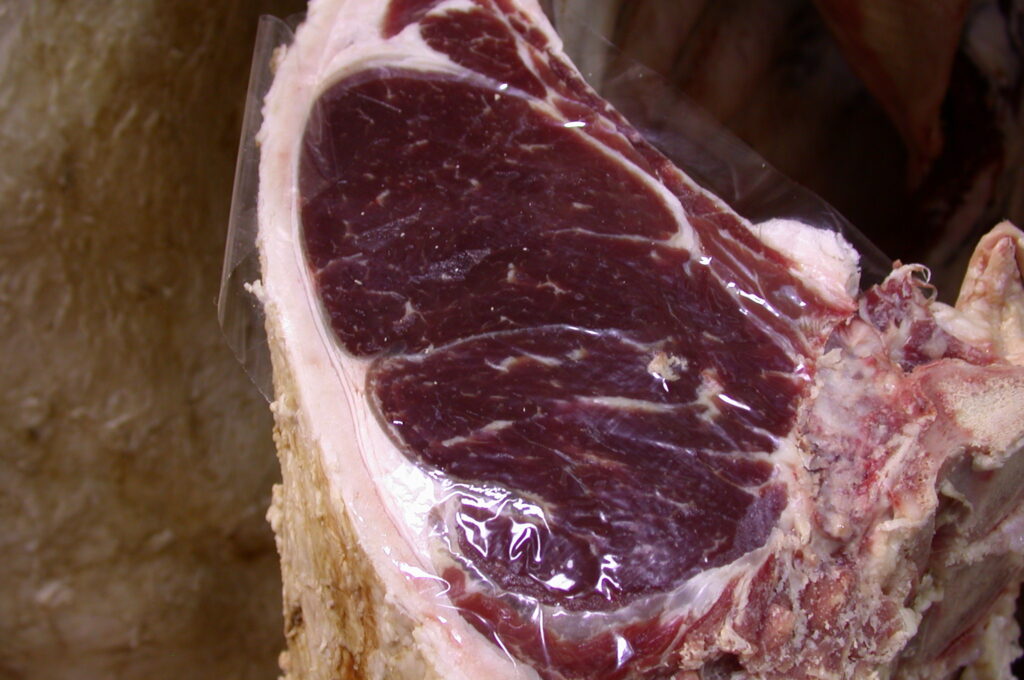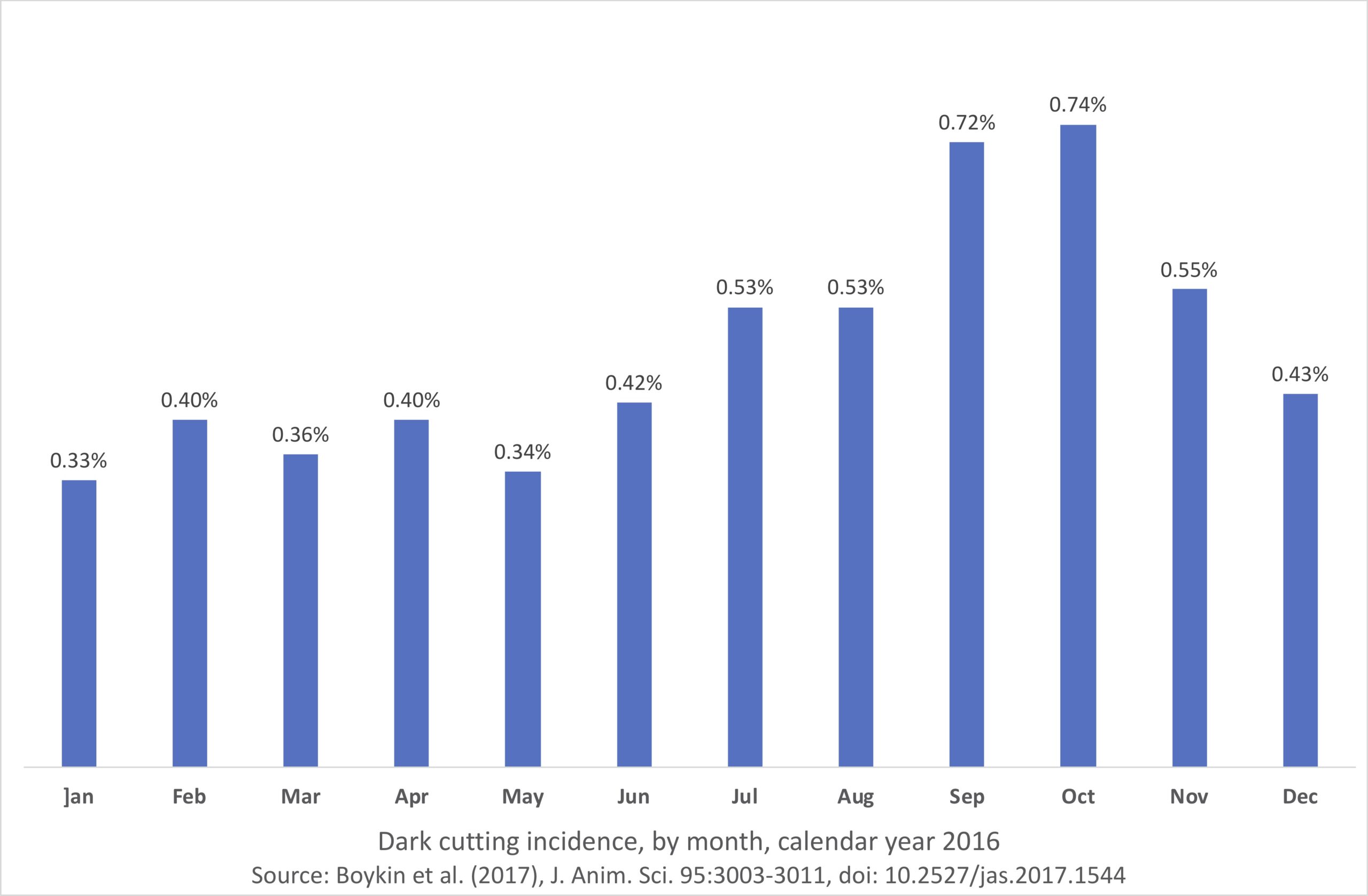
To understand “dark cutting beef,” it is necessary to understand how the bright red color of beef occurs. At death, the muscle attempts to maintain all normal activities. To do so, it must have energy in the form of adenosine triphosphate (ATP). To get ATP, it breaks down glycogen through postmortem glycolysis. A by-product of postmortem glycolysis is lactic acid. Lactic acid builds up in the muscle over a 16 to 24 hour period post-slaughter. A normal level of lactic acid (pH of 5.6) in the muscle will cause the meat to be bright cherry-red in color when it is exposed to oxygen for a short time period.
In “dark cutting beef,” the animal undergoes long-term stress before slaughter. This stress may be from transportation, rough handling, changing weather conditions such as cold fronts, or anything that causes the animal to draw on its glycogen reserves before slaughter. At death, there is limited amount of glycogen available to be converted to lactic acid, the muscle pH will be higher-than-normal (pH of 6.0 or higher), and the color of meat will be darker than normal.
“Dark cutting beef” occurs in 1 to 2% of beef carcasses. The percentage will be higher in the fall and winter months, and will be most evident two to three days after a sudden change in ambient temperature, especially if rain and wind accompany the temperature drop. There are different gradients of “dark cutting beef” ranging from slightly dark to very dark purple depending on how much glycogen is depleted in the living animal.
The chart below depicts the incidence of dark cutting, by month, during 2016.

“Dark cutting beef” is used in the food service industry rather than the retail industry because of its color. There is no real palatability problem with “dark cutting beef,” and this is why it is used in the food service industry where the raw product is cooked before the consumer sees it.
